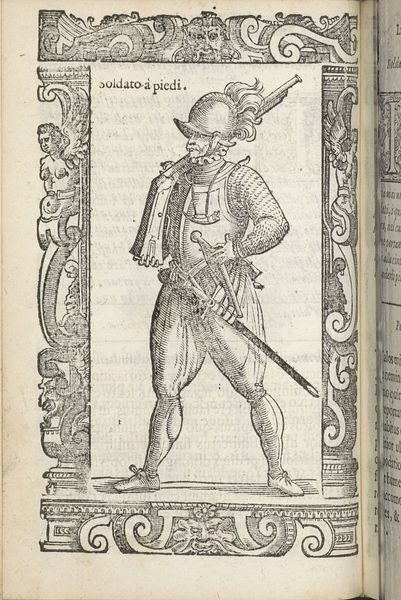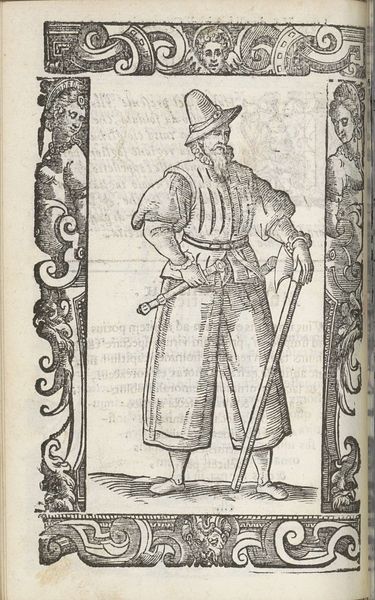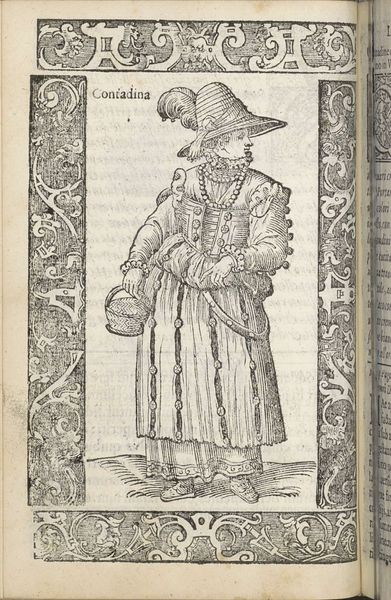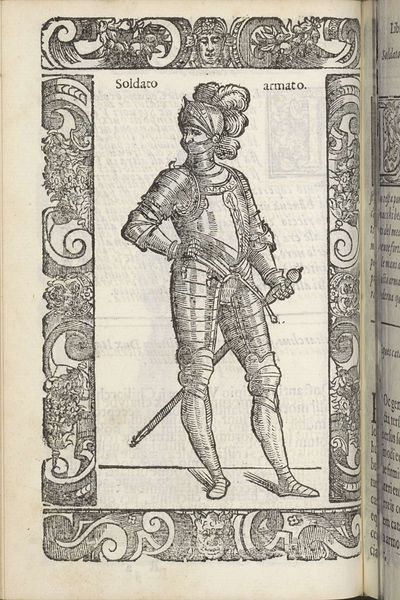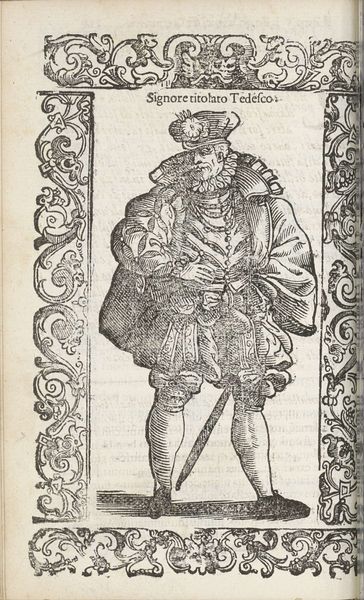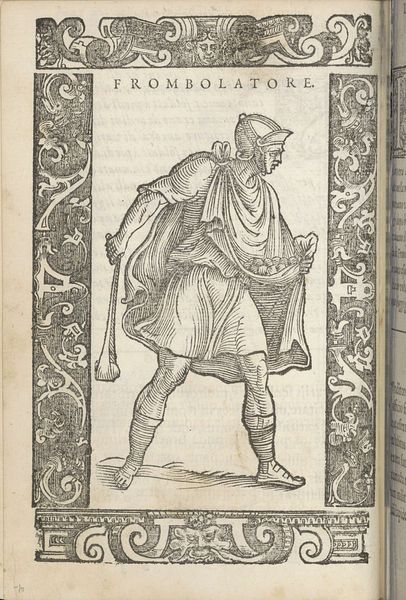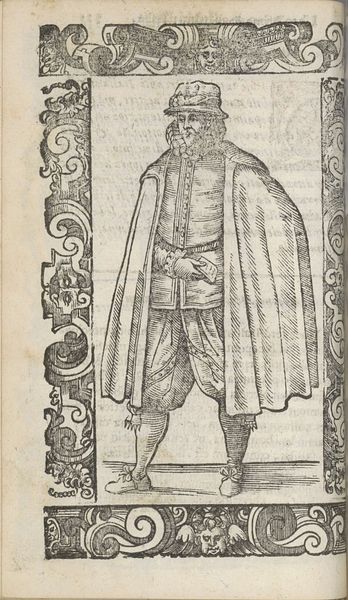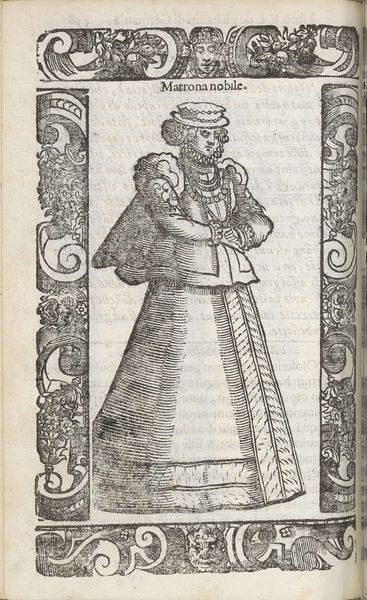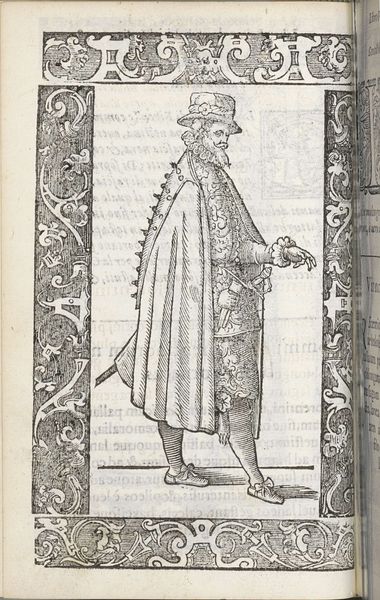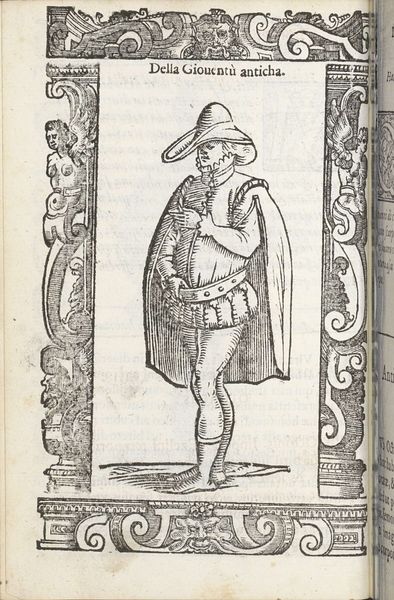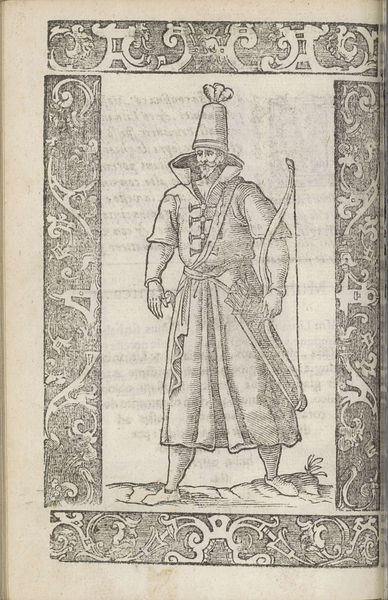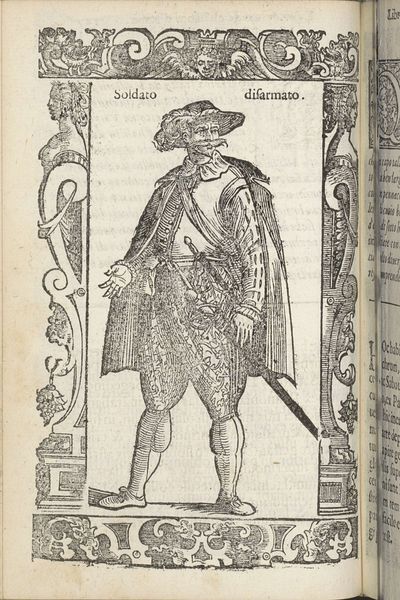
print, engraving
#
portrait
# print
#
pen sketch
#
figuration
#
11_renaissance
#
line
#
italian-renaissance
#
engraving
Dimensions: height 167 mm, width 125 mm
Copyright: Rijks Museum: Open Domain
Editor: So, here we have Christoph Krieger's "Armato," made in 1598. It’s a print, looks like an engraving maybe, depicting a figure in full armor. I find it captivating, yet kind of unsettling... What leaps out at you? Curator: You know, it's funny, unsettling is exactly the word. Krieger offers us this stoic figure, framed within almost whimsical, chaotic ornamentation. He's so still, posed and upright, but almost seems… trapped, right? The rigid armor, this heavy, historical weight juxtaposed with the almost playfully manic border? Gives you pause, doesn’t it? I almost want to ask: is he protecting himself or is he imprisoned? Editor: I hadn't thought of it as imprisonment! I suppose the weight of armor is quite literal, especially when it’s rendered so meticulously, detail by detail, line by line. What about the spear and sword - what are your thoughts on those elements? Curator: Ah, weaponry... Krieger presents him armed, a figure of authority and strength; symbols of preparedness for conflict and ready to protect the homeland. And I ask, tongue-in-cheek perhaps... what good is strength, if one can hardly move? If it’s a beautiful still life? Krieger challenges us to unpack so much tension there! What’s this man protecting, and at what cost? What did society ask from figures such as these, then, in the Renaissance? Heavy questions, embedded within exquisite detail. Editor: This tension between confinement and power…it casts a new light on the whole image for me. I initially just saw the surface of the armor, the posture. Now I'm sensing the pressure that exists beyond those iron boundaries. Curator: Absolutely! That push-and-pull— between visibility and vulnerability— it's what makes Krieger's work so unexpectedly compelling and what has stayed with me throughout the years.
Comments
No comments
Be the first to comment and join the conversation on the ultimate creative platform.
